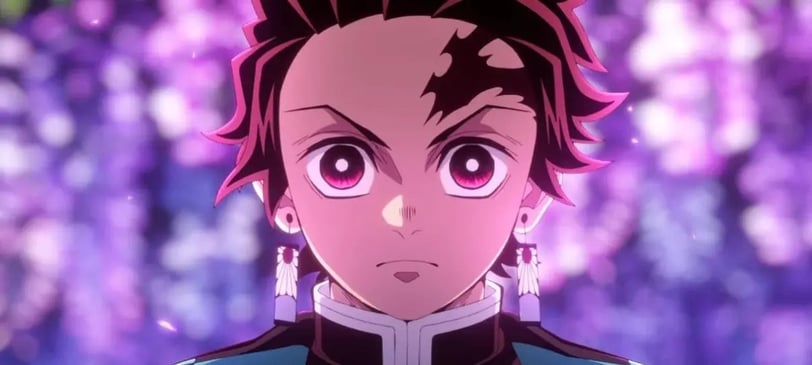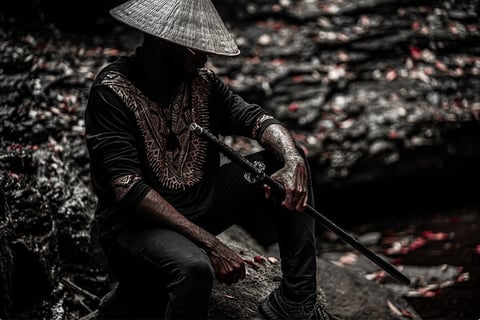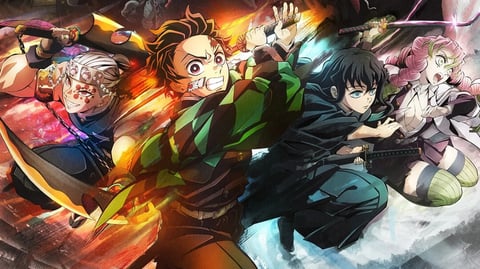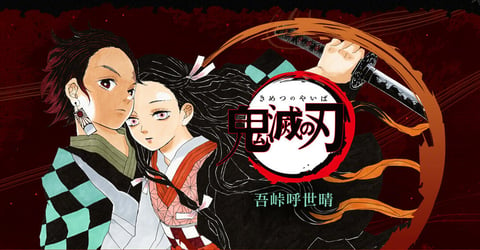Are Demon Slayers Samurai? Discover Now!
Explore the similarities and differences between samurai and demon slayers in the world of "Demon Slayer: Kimetsu no Yaiba." This article delves into their historical and fictional contexts, examining martial skills, codes of conduct, and cultural impacts. Discover how these warriors, separated by time and reality, captivate audiences with their timeless virtues of courage, honor, and sacrifice. Click to learn more!
DEMON SLAYER
Anime Fever
7/30/20245 min read


The world of anime and manga is vast and diverse, filled with an array of characters and storylines that captivate audiences worldwide. Among these, "Demon Slayer: Kimetsu no Yaiba," created by Koyoharu Gotouge, stands out as a cultural phenomenon. The series follows Tanjiro Kamado and his companions as they battle demons in a richly detailed setting inspired by Japan's Taisho era. A common question arises among fans and scholars alike: Are the demon slayers in this series akin to samurai? This article delves into the historical and cultural contexts of samurai and demon slayers, examining their similarities and differences.
Historical Context: The Samurai


The samurai were a class of warriors in feudal Japan, emerging in the 12th century and continuing until the Meiji Restoration in the late 19th century. They were not merely soldiers but also a social class with distinct cultural and ethical codes, known as bushido. Bushido, or "the way of the warrior," emphasized virtues such as loyalty, honor, discipline, and martial prowess. Samurai were often in the service of a daimyo (feudal lord) and were integral to the feudal system that governed Japan for centuries.
Samurai were trained in various martial arts, including kenjutsu (the art of the sword), archery, and horsemanship. Their weapons, especially the katana, became symbols of their status and skill. Additionally, many samurai were educated in literature, philosophy, and the arts, making them multifaceted individuals.
The World of Demon Slayer


"Demon Slayer: Kimetsu no Yaiba" is set in a fictional version of Japan during the Taisho era (1912-1926). The story revolves around Tanjiro Kamado, a kind-hearted boy whose family is slaughtered by demons. His sister, Nezuko, survives but is transformed into a demon. Tanjiro joins the Demon Slayer Corps, an organization dedicated to eradicating demons and protecting humanity. The corps members are highly skilled fighters, trained to combat demons using specialized techniques and breathing styles.
The demon slayers employ Nichirin Blades, unique swords that can kill demons. Each sword is imbued with special properties that change color based on the wielder's personality and abilities. The slayers also use a form of breathing known as "Total Concentration Breathing," which enhances their physical and mental capabilities.
Similarities Between Demon Slayers and Samurai


1. Martial Skill and Training
Both samurai and demon slayers undergo rigorous training to hone their combat skills. Samurai were trained in various weapons and martial arts, while demon slayers master the use of Nichirin Blades and specialized breathing techniques. This emphasis on martial prowess is a core similarity, as both groups are defined by their fighting abilities.
2. Code of Conduct
The concept of bushido in samurai culture finds a parallel in the moral and ethical standards upheld by the demon slayers. Although not explicitly stated as bushido, the demon slayers exhibit virtues such as bravery, loyalty, and self-sacrifice. Tanjiro, for example, is driven by a strong sense of duty and compassion, reminiscent of the samurai's commitment to honor and duty.
3. Role as Protectors
Samurai often served as protectors of their lords and the common people, maintaining peace and order in their domains. Similarly, demon slayers protect humanity from the threat of demons. This protective role underscores their significance within their respective societies, positioning them as guardians against chaos and destruction.
4. Symbolic Weapons
The katana is a symbol of the samurai's status and skill, much like the Nichirin Blades are for the demon slayers. Both weapons are more than mere tools; they represent the identity and prowess of their wielders. The forging of these weapons is also imbued with cultural and symbolic significance, reflecting the deep connection between the warriors and their swords.
Differences Between Demon Slayers and Samurai
1. Historical vs. Fictional Context
The most obvious difference is that samurai are historical figures, whereas demon slayers exist within a fictional narrative. Samurai were part of a real social and political system in Japan, while demon slayers operate in a fantastical world with supernatural elements. This distinction is crucial in understanding the unique attributes and challenges faced by each group.
2. Enemies and Battles
Samurai primarily fought human adversaries, whether in clan wars, rebellions, or foreign invasions. Their conflicts were grounded in the political and social struggles of feudal Japan. In contrast, demon slayers battle supernatural entities with extraordinary powers. The nature of their enemies necessitates different strategies, weapons, and abilities, setting them apart from the historically grounded samurai.
3. Organizational Structure
The organizational structures of samurai and demon slayers differ significantly. Samurai were part of a hierarchical feudal system, serving under a daimyo. Their status and duties were defined by this system. The Demon Slayer Corps, on the other hand, is an independent organization without direct ties to the government. It operates with a level of autonomy that contrasts with the more rigid and hierarchical structure of samurai society.
4. Technological and Cultural Context
The Taisho era, in which "Demon Slayer" is set, was a period of modernization and westernization in Japan. This context introduces elements such as trains, electricity, and modern clothing, which differ from the feudal setting of the samurai era. These technological and cultural shifts influence the world of the demon slayers, adding layers of complexity to their missions and lifestyles that would be unfamiliar to the samurai.
The Cultural Impact of Demon Slayer


"Demon Slayer: Kimetsu no Yaiba" has had a profound impact on popular culture, both in Japan and globally. The series has brought renewed interest in Japanese culture and history, particularly the Taisho era. Its portrayal of bravery, resilience, and the fight against evil resonates with audiences, drawing parallels to the enduring legacy of the samurai.
The character of Tanjiro, with his unwavering compassion and determination, embodies qualities that are universally admired. His journey, fraught with loss and hardship, mirrors the struggles faced by many heroes in both historical and fictional narratives. The series' success highlights the timeless appeal of stories that explore the human spirit's capacity to overcome adversity.
Conclusion
While demon slayers share several characteristics with samurai, including martial skill, a code of conduct, and a protective role, they exist in a distinctly different context. The historical samurai were warriors of feudal Japan, bound by a rigid social system and engaged in human conflicts. In contrast, demon slayers are fictional warriors fighting supernatural enemies in a modernizing world. Despite these differences, the parallels between them offer a rich tapestry of cultural and ethical themes that continue to captivate and inspire.
"Demon Slayer: Kimetsu no Yaiba" serves as a bridge between the past and the present, weaving historical elements with imaginative storytelling. Whether viewed as modern-day samurai or as a unique creation entirely, the demon slayers stand as a testament to the enduring fascination with warriors who embody the highest ideals of courage, honor, and sacrifice.
